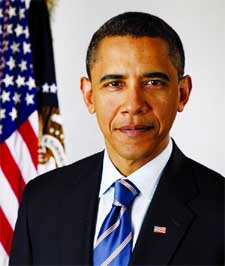
News Desk :The US has imposed fresh sanctions on Iranian companies and individuals over a recent ballistic missile test, according to BBC and International New York Times.The new sanctions prevent 11 entities and individuals linked to the missile programme from using the US banking system. The move came after international nuclear sanctions on Iran were lifted as part of a deal hailed by President Barack Obama on Sunday as “smart”.Obama also announced the resolution of another argument between Tehran and Washington that dates to the Iranian revolution, this one over $400 million in payments for military equipment that the United States sold to the shah of Iran and never delivered when he was overthrown. The Iranians got their money back, with $1.3 billion in interest that had accumulated over 37 years.But perhaps the most notable part of Obama’s statement on Sunday was its absence of triumphalism and its warning that problems with Iran over ideology, Syria and regional ambitions were not over. Obama and Secretary of State John Kerry, who orchestrated the events over the weekend, decided several weeks ago to delay the imposition of sanctions against Iranian companies and individuals for two missile tests, one in October and another in November, that had violated United Nations resolutions.Iran’s president, Hassan Rouhani, called the completed nuclear deal “one of the golden pages” of the country’s history. Obama had vowed to continue to apply non-nuclear sanctions, even after last summer’s nuclear agreement was signed. But State Department officials worried that the prisoner release would be imperiled if the sanctions were announced before the swap was arranged. “We didn’t know how big the risk was,” one senior official said. “But it wasn’t trivial.” While the appearance of the back-to-back sanctions announcements – lifting nuclear sanctions and adding missile sanctions – might seem to suggest that Washington was merely recategorizing old penalties, they are actually not comparable.The lifting of nuclear sanctions on Saturday allowed Iran to re-enter the world’s oil markets; according to some estimates, by the end of the year its exports may increase by a million barrels a day, yielding about $30 million a day in revenue at current prices. Its ships will be able to enter and leave foreign ports, and its citizens will have access to global financial markets.The departure of three of the freed Americans – Jason Rezaian, Amir Hekmati and Saeed Abedini – came after a tense day in which the Swiss aircraft sent for them sat on the tarmac in Tehran. The main issue was the American insistence that Rezaian’s wife, Yageneh Salehi, and his mother be able to fly out with him. They were eventually allowed on the plane.They were triggered by Iran conducting a precision-guided ballistic missile test capable of delivering a nuclear warhead last October, violating a United Nations ban.”Iran’s ballistic missile programme poses a significant threat to regional and global security, and it will continue to be subject to international sanctions,” said Adam J Szubin, US acting under-secretary for terrorism and financial intelligence.Moments later, President Obama hailed the nuclear deal, which is being implemented following verification by the International Atomic Energy Agency (IAEA) that Iran had restricted its sensitive nuclear activities.What are the sanctions?Nuclear sanctions have been in place since 2006, on top of other sanctions stretching back decades:The economic sanctions being lifted now were imposed progressively by the US, EU and UN in response to Iran’s nuclear programmeThe EU is lifting restrictions on trade, shipping and insurance in fullThe US is suspending, not terminating, its nuclear-related sanctions; crucially, Iran can now reconnect to the global banking systemThe UN is lifting sanctions related to defence and nuclear technology sales, as well as an asset freeze on key individuals and companiesNon-nuclear US economic sanctions remain in place, notably the ban on US citizens and companies trading with Iran, and US and EU sanctions on Iranians accused of sponsoring terrorism remain in placeA flurry of Iranian economic activity is anticipated:Nearly $100bn (£70bn) of Iranian assets are being unlockedIran is expected to increase its daily export of 1.1m barrels of crude oil by 500,000 shortly, and a further 500,000 thereafterIran is reportedly poised to buy 114 new passenger planes from the Airbus consortiumThe prospect of Iran doubling its crude oil exports has contributed to the continuing fall in the oil price. Benchmark Brent crude closed below $29 (£20.3) on Friday.Share prices in Saudi Arabia, the Arab world’s largest stock market, fell more than 6% following the lifting of sanctions.The IAEA said it had installed a device at the Natanz plant to monitor Iran’s uranium enrichment activities in real time, in order to verify that uranium enrichment levels were kept at up to 3.67% as agreed in the deal with world powers.As part of the deal, Iran had to drastically reduce its number of centrifuges and dismantle a heavy-water reactor near the town of Arak, both of which could be used in creating nuclear weapons.Iran has always maintained its nuclear programme is peaceful, but opponents of the deal say it does not do enough to ensure the country cannot develop a nuclear bomb. Iran has hit back at the US decision to impose sanctions on 11 companies and individuals linked to its ballistic missile programme and said it would upgrade its legal missile programmeA statement released by Iran’s foreign ministry on Monday said: “The Islamic republic of Iran?.?.?.?will reply to such propaganda moves [new sanctions] by developing its legal missile programme more seriously and upgrading its defence capabilities as well as national security.”

